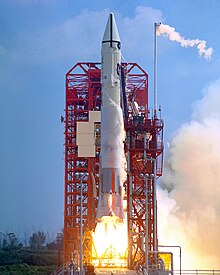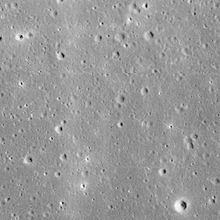Surveyor 1
Surveyor 1 transmitted 11,237 still photos of the lunar surface to the Earth by using a television camera and a sophisticated radio-telemetry system.
The Surveyor series of space probes was designed to carry out the first soft landings on the Moon by any American spacecraft.
These spacecraft carried two television cameras — one for its approach, which was not used in this case, and one for taking still pictures of the lunar surface.
Their television systems transmitted pictures of the spacecraft footpad and surrounding lunar terrain and surface materials.
Justin Rennilson, formerly of Jet Propulsion Laboratory, stated, "We figured the probability of success at around 10 to 15 percent."
[4] The TV camera consisted of a vidicon tube, a zoom lens operated at either end of its range resulting in 25 millimeter and 100 millimeter focal-lengths, resulting in optical fields of view of 25.3 or 6.43 degrees, a shutter, clear, orange, green and blue optical filters,[5] and iris-system mounted along an axis inclined approximately 16 degrees from the central axis of Surveyor 1.
This is because the image plane and scanning raster of the vidicon are stationary with respect to the mirror azimuth axis.
The mirror drive mechanism consisting of stepper motors provided a step size of 2.48° ±0.1° in elevation and 3.0° ±0.1° in azimuth.
The television images were displayed on Earth on a slow-scan monitor coated with a long persistency phosphor.
Strain gauges were mounted on each leg shock absorber to record the peak axial forces at landing impact of the spacecraft.
The spacecraft returned data on the motion of the Moon, which would be used to refine the map of its orbital path around the Earth as well as better determine the distance between the two worlds.



